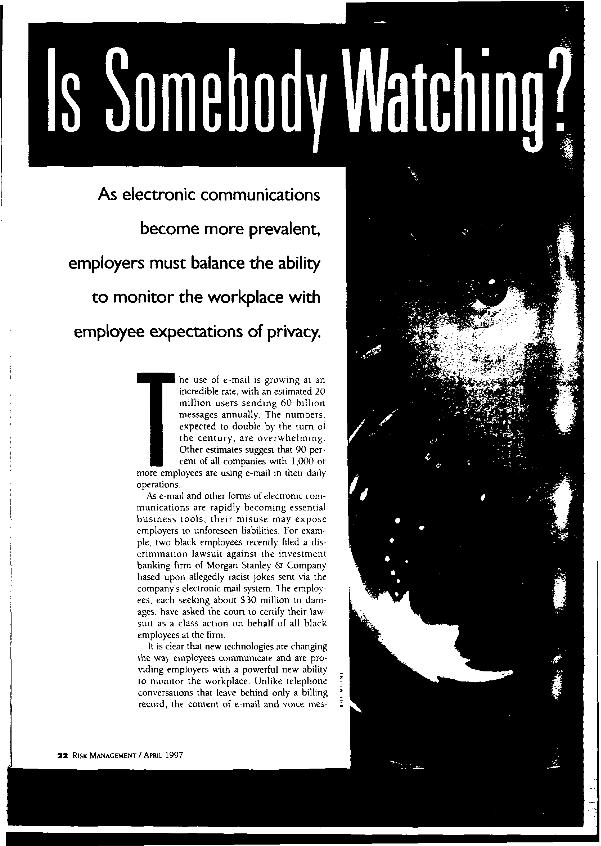Is somebody watching? : employee communications and privacy

Contenido multimedia no disponible por derechos de autor o por acceso restringido. Contacte con la institución para más información.
| Tag | 1 | 2 | Value |
|---|---|---|---|
| LDR | 00000nab a2200000 i 4500 | ||
| 001 | MAP20071030042 | ||
| 003 | MAP | ||
| 005 | 20220902102332.0 | ||
| 007 | hzruuu---uuuu | ||
| 008 | 980423e19970401usa|||| | |00010|eng d | ||
| 040 | $aMAP$bspa | ||
| 084 | $a910.5 | ||
| 100 | 1 | $0MAPA20080095482$aCreps, Clay D. | |
| 245 | 1 | 0 | $aIs somebody watching?$b: employee communications and privacy$cby Clay D. Creps and Linda M. Bolduan |
| 520 | $aA wide gap exists between the scope of workplace privacy protection afforded to public and private sector workers. The U.S. Constitution, which protects against state action, applies only to the privacy rights of public employees. Although there are federal statutes that regulate computer crimes and informational privacy, they do not explicitly govern the ability of private employers to monitor employee electronic communications. The only federal statute that specifically addresses the issues of intercepting and accessing electronic communications is the Electronic Communications Privacy Act of 1986 (ECPA). It is the ECPA, for instance, that prohibits electronic eavesdropping of conversations over cellular or cordless telephones | ||
| 650 | 1 | 1 | $0MAPA20080605612$aDerecho constitucional |
| 650 | 1 | 1 | $0MAPA20080568863$aEstados Unidos |
| 650 | 1 | 1 | $0MAPA20080546991$aEmpresas |
| 650 | 1 | 1 | $0MAPA20080584337$aControl de gestión |
| 650 | 1 | 1 | $0MAPA20080571696$aControl interno |
| 650 | 1 | 1 | $0MAPA20080584405$aCorreo electrónico |
| 650 | 1 | 1 | $0MAPA20080626075$aProtección de datos personales |
| 650 | 1 | 1 | $0MAPA20080605599$aDerecho a la intimidad |
| 650 | $0MAPA20080592875$aProtección de datos | ||
| 700 | 1 | $0MAPA20080186098$aBolduan, Linda M. | |
| 740 | 0 | $aRisk management | |
| 773 | 0 | $tRisk management$dNew York$gnº 4, April 1997 ; p. 22-28 |

